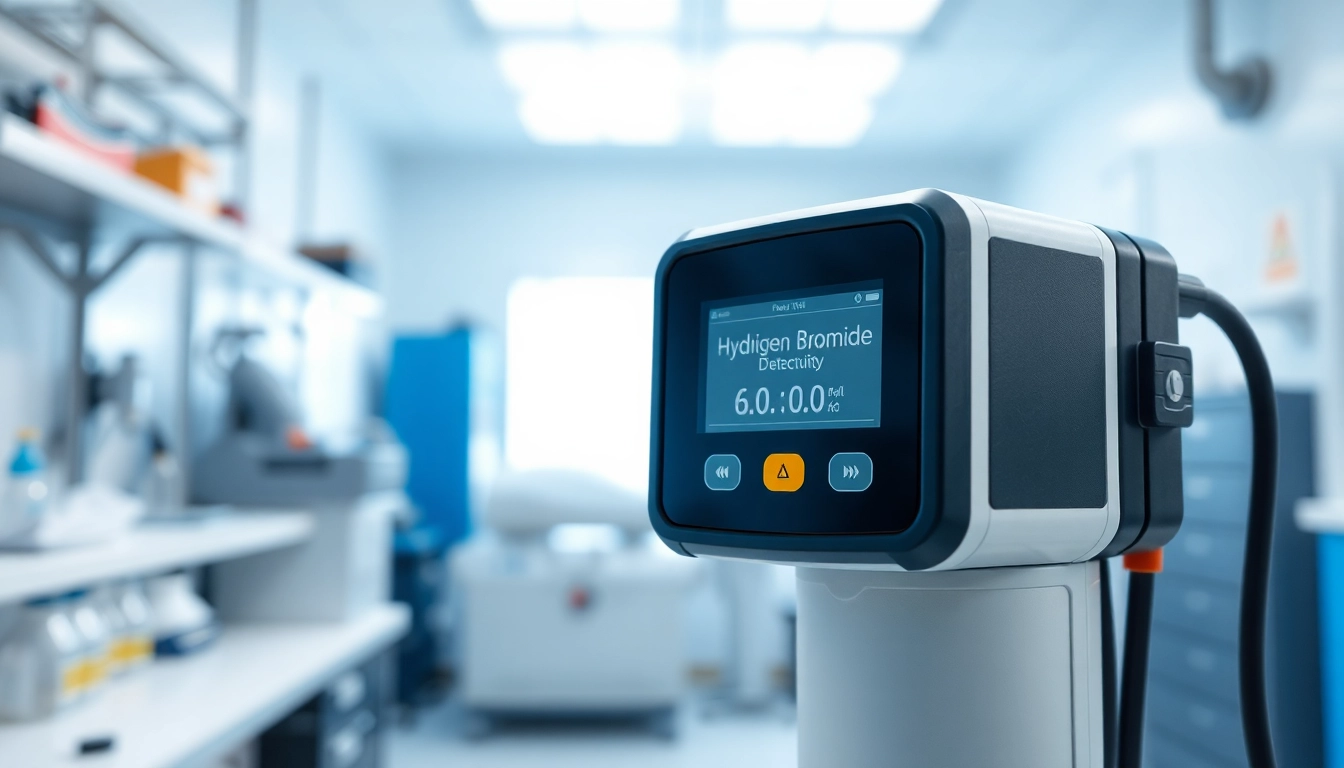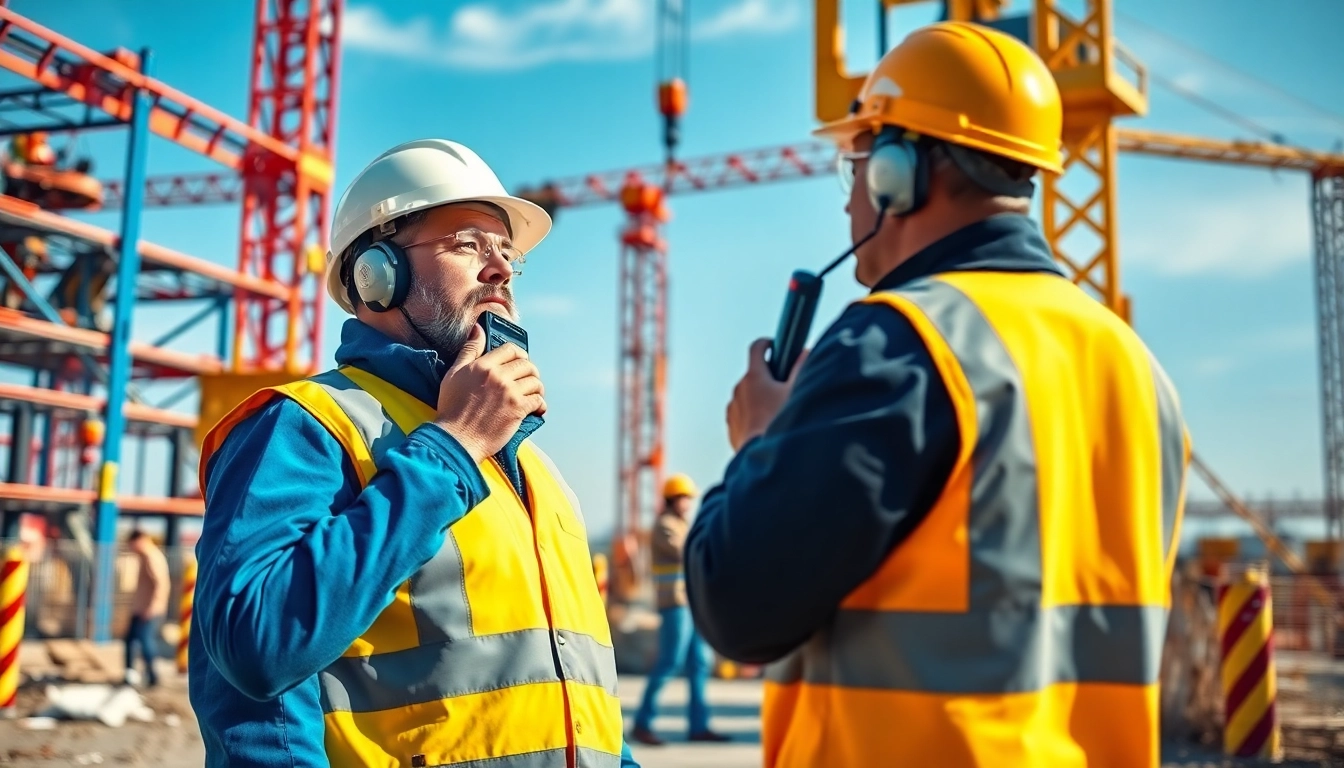Understanding Hydrogen Bromide and Its Risks
What is Hydrogen Bromide?
Hydrogen Bromide (HBr) is a colorless gas with a pungent odor, highly soluble in water. It is an inorganic compound formed by the combination of hydrogen and bromine. It reacts vigorously with various substances, especially bases, and plays a critical role in many industrial applications, including the production of bromine compounds, pharmaceuticals, and flame retardants. Understanding its properties is essential for industries where hydrogen bromide is present, as well as for ensuring workplace safety and compliance.
Given its volatile nature, hydrogen bromide can pose severe risks if not properly managed. For workplaces that handle HBr, having an appropriate Hydrogen Bromide gas detector is crucial to ensure safety and regulatory compliance.
Health Hazards of Exposure
Exposure to hydrogen bromide can result in multiple health issues, primarily affecting the respiratory system. Short exposures can cause irritation to the eyes, skin, and respiratory tract. More prolonged exposure or higher concentrations can lead to serious health complications, including:
- Respiratory issues: Coughing, wheezing, and difficulty breathing are common symptoms caused by inhalation of HBr.
- Skin and eye irritation: Contact with liquid hydrogen bromide or high concentrations of vapor can result in serious burns or damage.
- Long-term effects: Chronic exposure can lead to pulmonary damage and could have systemic effects, including potential carcinogenic risks.
Employers must provide appropriate training and safety equipment to employees who might come in contact with hydrogen bromide, emphasizing the importance of immediate medical attention in case of exposure.
Industrial Uses and Regulations
Hydrogen bromide is a valuable chemical in various industries. Its applications include:
- Production of bromine: HBr is utilized in the extraction of bromine from seawater and brine sources.
- Manufacture of pharmaceuticals: It serves as an intermediate in the synthesis of several pharmaceuticals.
- Polymer production: HBr is used in the creation of flame-retardant substances in plastics.
With these extensive applications, it is critical that industries adhere to safety regulations concerning HBr. Regulatory bodies such as the Occupational Safety and Health Administration (OSHA) have established permissible exposure limits (PELs) for hydrogen bromide to protect workers. Employers are responsible for maintaining these limits through monitoring and using effective gas detection equipment.
Types of Hydrogen Bromide Gas Detectors
Fixed vs. Portable Detectors
When selecting a hydrogen bromide gas detector, organizations can choose between fixed and portable options, each designed for specific environments and uses:
- Fixed detectors: These devices are installed at strategic locations within a facility and offer continuous monitoring. They are ideal for places with high concentrations of gases and allow for real-time alerts to monitor changes in HBr levels consistently.
- Portable detectors: Designed for personal safety, these compact devices can be carried by workers. They are essential for monitoring exposure in various areas, particularly where fixed detectors cannot be installed. Portable detectors provide flexibility and immediate feedback of gas concentrations.
Single-Gas vs. Multi-Gas Detectors
Gas detectors can also be classified based on their detection capabilities. Organizations need to determine the appropriate type based on their specific requirements:
- Single-gas detectors: As the name implies, these detectors monitor only one type of gas, such as hydrogen bromide. They are often more cost-effective and are perfect for environments where HBr is the primary concern.
- Multi-gas detectors: These versatile devices can detect several gases simultaneously, including hydrogen bromide, carbon monoxide, and volatile organic compounds. While they often come at a higher initial cost, they offer broader protection and versatility for workplaces that may encounter multiple hazardous gases.
Comparison of Leading Brands
While selecting hydrogen bromide gas detectors, comparing the leading brands can provide insights into performance, reliability, and features. Major manufacturers like Dräger, Honeywell, and MSA have established names in gas detection technology, each offering varied models tailored to specific needs.
Factors to consider when comparing brands include:
- Accuracy and response time of detection
- Durability and design suitable for industrial environments
- The offered warranty and customer support services
Reading reviews, case studies, and industry reports can further guide the decision-making process when choosing the right device for hydrogen bromide detection.
Key Features to Look For
Detection Sensitivity and Accuracy
When selecting a hydrogen bromide gas detector, the sensitivity and accuracy of the device are paramount. The detector should provide quick and precise readings of HBr levels to prevent potential exposure risks. High-sensitivity detectors able to identify low concentrations of hydrogen bromide in air are crucial for safeguarding workers’ health.
In addition, the calibration of the detector affects its accuracy; choosing models that offer easy calibration procedures can enhance reliability over time.
Battery Life and Portability
For portable detectors, battery life is a critical feature. Users should consider the operational duration of the device on a single charge and ensure that it can sustain extended work shifts. A model with the option for quick battery changes can ensure uninterrupted monitoring.
Additionally, the weight and ergonomic design of the portable detector impact its usability. A lightweight and compact design facilitates ease of transport and comfort for users in various settings.
Calibration and Maintenance Requirements
Regular calibration is essential for maintaining the accuracy of hydrogen bromide gas detectors. The frequency of required calibrations varies among models, so understanding the maintenance requirements is crucial. Some detectors may feature automated calibration, which can simplify the upkeep process.
Additionally, consistent maintenance, including cleaning and replacing filters or sensors, ensures optimal performance. Review the manufacturer’s guidelines to establish a suitable schedule for maintaining the gas detection equipment.
Best Practices for Using Hydrogen Bromide Gas Detectors
Installation Guidelines in Various Settings
Proper installation of hydrogen bromide gas detectors is critical to ensuring reliable monitoring. Here are some best practices:
- Location: Install detectors close to areas where hydrogen bromide is likely to accumulate, such as near storage tanks or processing units.
- Height: Positioning above head height can often help with accurate air sampling but consider the specific environment. Ensure the detectors are protected from physical impact and environmental conditions.
- Testing: Always test the system after installation to ensure that it successfully detects the target gas within the specified limits.
Routine Maintenance and Check-Up Procedures
To guarantee reliability, routine maintenance should include:
- Regularly checking for calibration and sensor functionality.
- Cleansing the device free from dust or contaminants that could affect performance.
- Conducting functional tests at prescribed intervals as outlined by the manufacturer.
Document all maintenance activities to comply with safety regulations and facilitate future evaluations.
Emergency Protocols and Evacuation Plans
Despite preventative measures, emergencies can occur. Implementing robust emergency protocols is essential for workplace safety:
- Alert systems: Ensure all detectors are linked to an alarm system that activates upon detection of hydrogen bromide, notifying all personnel effectively.
- Evacuation plans: Develop clear, concise evacuation procedures that all personnel must understand. Conduct regular drills to practice and refine these protocols.
- Training: Provide training for all employees on the hazards of hydrogen bromide and the specific measures in place to protect them.
Future Trends in Gas Detection Technologies
Advancements in Sensor Technologies
The future of gas detection technology is promising, particularly with advancements in sensor technologies. Innovations such as nanotechnology and smart sensors are on the rise, enabling quicker response times and enhanced sensitivity to trace levels of gases like hydrogen bromide. These advancements lead to superior detection capabilities, improving overall workplace safety.
IoT Integration for Real-Time Monitoring
The integration of Internet of Things (IoT) technology in gas detection systems future-proofs detection processes. IoT-enabled gas detectors can transmit real-time data to central monitoring systems, allowing for immediate alerts and action if gas levels exceed safety thresholds. This connectivity enhances situational awareness and enables remote monitoring, making it essential for facilities with multiple locations.
Sustainability and Eco-Friendly Solutions
As industries move toward sustainability, the development of eco-friendly gas detection solutions is becoming more prevalent. Manufacturers are focusing on reducing the environmental impact of gas detection systems through the use of low-energy sensors and recyclable materials. This trend is crucial in aligning with global sustainability goals while still ensuring safety standards are met.



